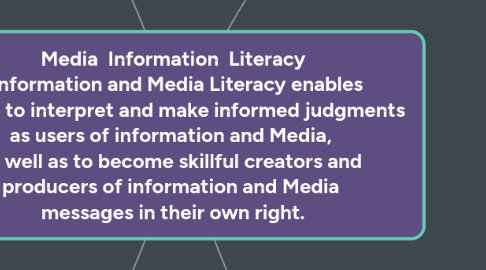
1. ~ Period: 1700 to 1930 ~ Industrial Age • People use the power of steam, developed machine tools, established iron production, and the manufacturing of various products ( Including books through the printing press ). • Experience an early product of media's pre-industrial age via a replica of the Gutenberg Press found inside the Mind Museum in Bonifacio Global City, Taguig.
2. ~ Period: 35,000 BCE to 220 ~ Pre- Industrial Age • People discover from fire, develop paper from plants, and forged weapons and tools with stone, bronze, copper and iron. • From vinyls, to tape, to discs, to digital players like iPod, technology has been a pivotal factor in shaping media.
2.1. Examples of PRE - INDUSTRIAL AGE: • Cave Paintings • Clay Tablets • Papyrus in Egypt • Acta Diurna in Rome • Dibao in China
3. EVOLUTION OF MEDIA INFORMATION LITERACY
4. Example of INDUSTRIAL AGE: • Electrical Telegraph • Steamboats • Hot blast iron • Spinning Jenny • Cotton Gin
5. What is MEDIA? - Entails the technical and artistic creation and delivery of information - It is also important to note that media is actually the plural form of "medium", the meaning of which also reflect the importance of the information and communication process - The dictionary defines "media" as "the means of communication, as radio and television, newspaper and magazines, that reach or influence people widely
5.1. What is INFORMATION? - Is stimuli that has meaning in some context for it's receiver. - Can be thought of as the resolution of uncertainty; it is that which answer the question of "what an entity is"
5.1.1. What is LITERACY? -Is the ability to read and write one's own name and further for knowledge and interest, write coherently, and think critically about the written word. - Traditionally defined by dictionaries as the ability to read and write.
5.2. Examples of MEDIA: - Newspapers. - Printed Matter - Television. - Internet information - Radio. And Advertising Examples of INFORMATION: - Business. - Learning - Research. - Administrative - Work Examples of LITERACY: - Construct Meaning - Write and Read - Understanding
5.3. MEDIA AS AN INFORMATION INDUSTRY
5.3.1. Companies and telecommunications providers that make it possible for us to go online constitute the Internet industry. When discussing media as the channel, especially in the typical SMCR communication model, these pertain to the specific media industry or creative industry that encompasses such as channels
5.4. MEDIA AS A CULTURE OF ENTERTAINMENT
5.4.1. We purchase various forms of media gadgets or participate in media events mainly to have fun. Media is so powerful that it transforms a local talent into an instant worldwide sensation, such as Psy's emergence through his Gangnam style, and Thalia's popularity from her portrayal in several Mexican soap operas.
6. HISTORY OF MEDIA Ever since the first human being evolved on planet Earth, communicating with each other is one of the most essential and immediate need that they had to learn, develop, and master. This is to convey information they want to share and get the information they also need. And whenever there's a need for information and communication, we now know that certain kinds of media should also be present in order to help facilitate this basic human need. Forty thousand years ago, some human ancestors painted on the walls of a cave on the Indonesian island of Sulawesi (below). They left stencils of their hands and other markings. Cave painting in France and Spain have been dated to a couple of thousand years later. Experts don't know exactly what purpose the artwork had, but some suggest they might be the first examples of communicating through a medium. The "audience" for such paintings was very small By early in the 17th century, the first newspapers appeared but, because few people were literate, readership was limited. By the early 1800s, high circulation newspapers such as The Times of London were developing huge readership.
7. UNDERSTANDING MEDIA The key to appreciate information technologies and communication process is reading. Framing means to construct, compose or imagine something, meaning to create with a solid plan to follow using a specific structure in mind.
7.1. NEWSPAPER News is defined as "the communication of information on current events print, broadcast, internet or word of mouth to a third party or mass audience Newspaper all have section inside, mostly covering the general category of headlines
7.2. JOURNALISM Is defined as "the collecting, writing, editing and presenting of news in newspapers, magazines, radio and television broadcast, or the internet". A journalism it's main characteristic in creating a news story is objectivity.
7.3. Photography and Timeless Image Concepts - Photography, as originally defined, is "the process of recording images through chemical interaction caused by light Ray's hitting a sensitized surface" referring to the celluloid film known before as the negative. - In taking photography, one must be knowledgeable of the elements of photography in order to get the perfect shot.
7.3.1. FOLLOWING QUESTIONS IN COMPOSING SHOT • Where is the camera located? Is it near or far from the subject • Where is the camera placed? Is it higher or lower than the subjects? • What is the main focus of the shot? What are the secondary elements of the shot?

